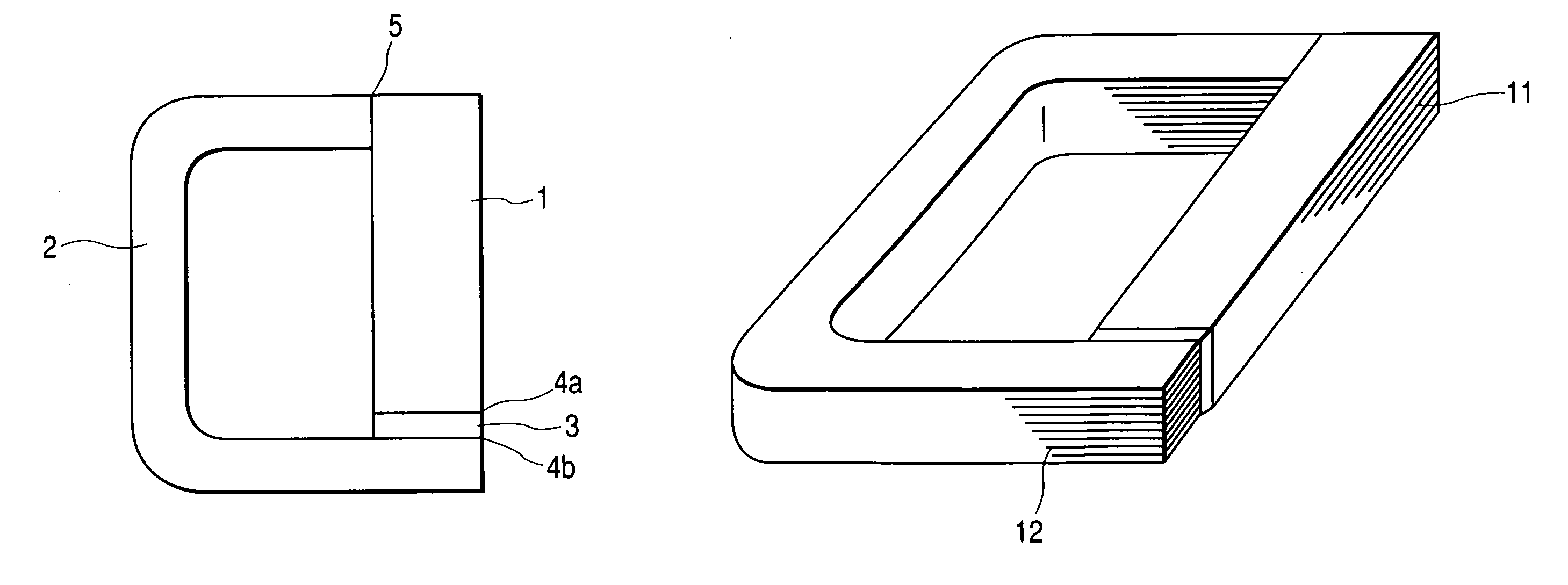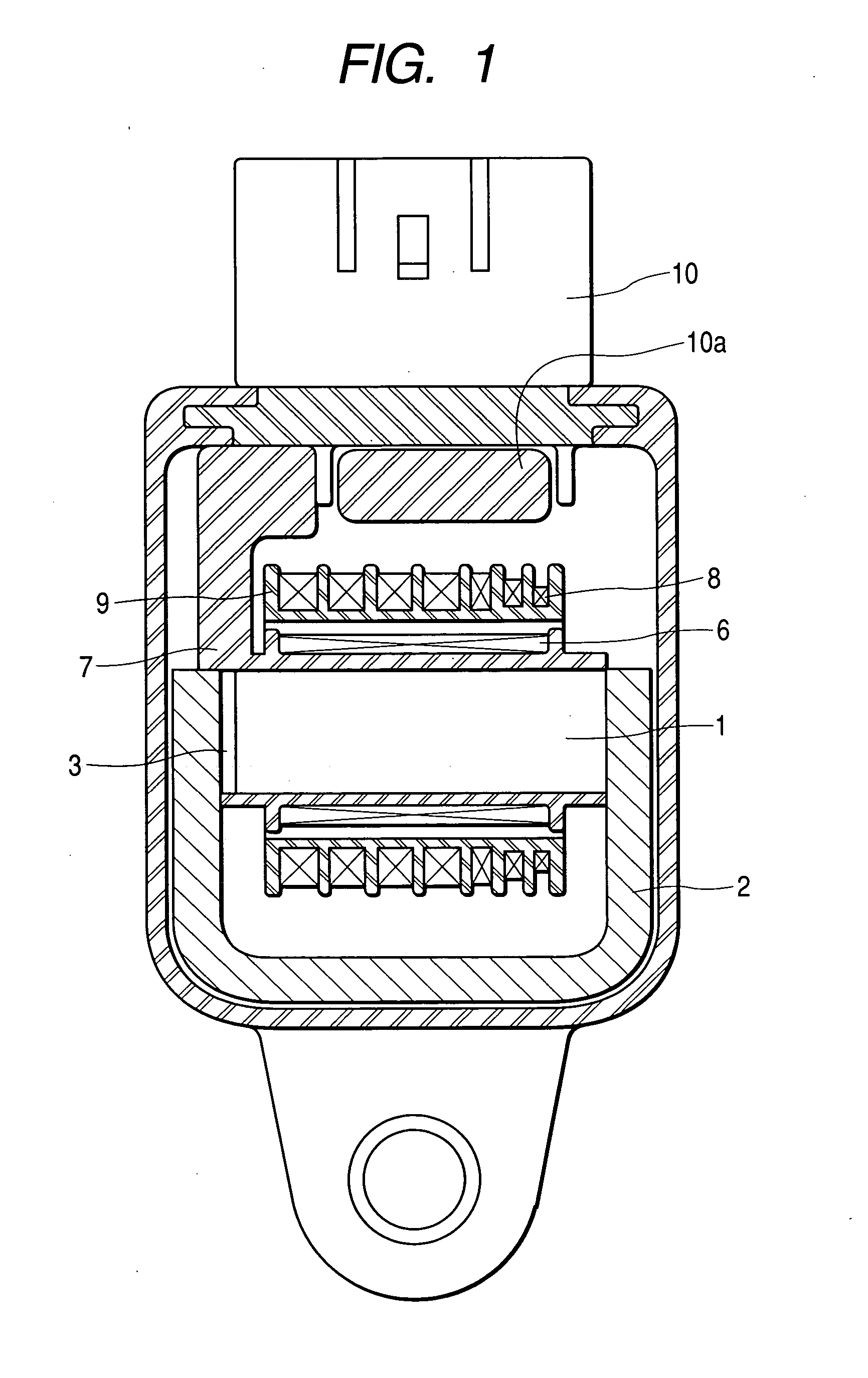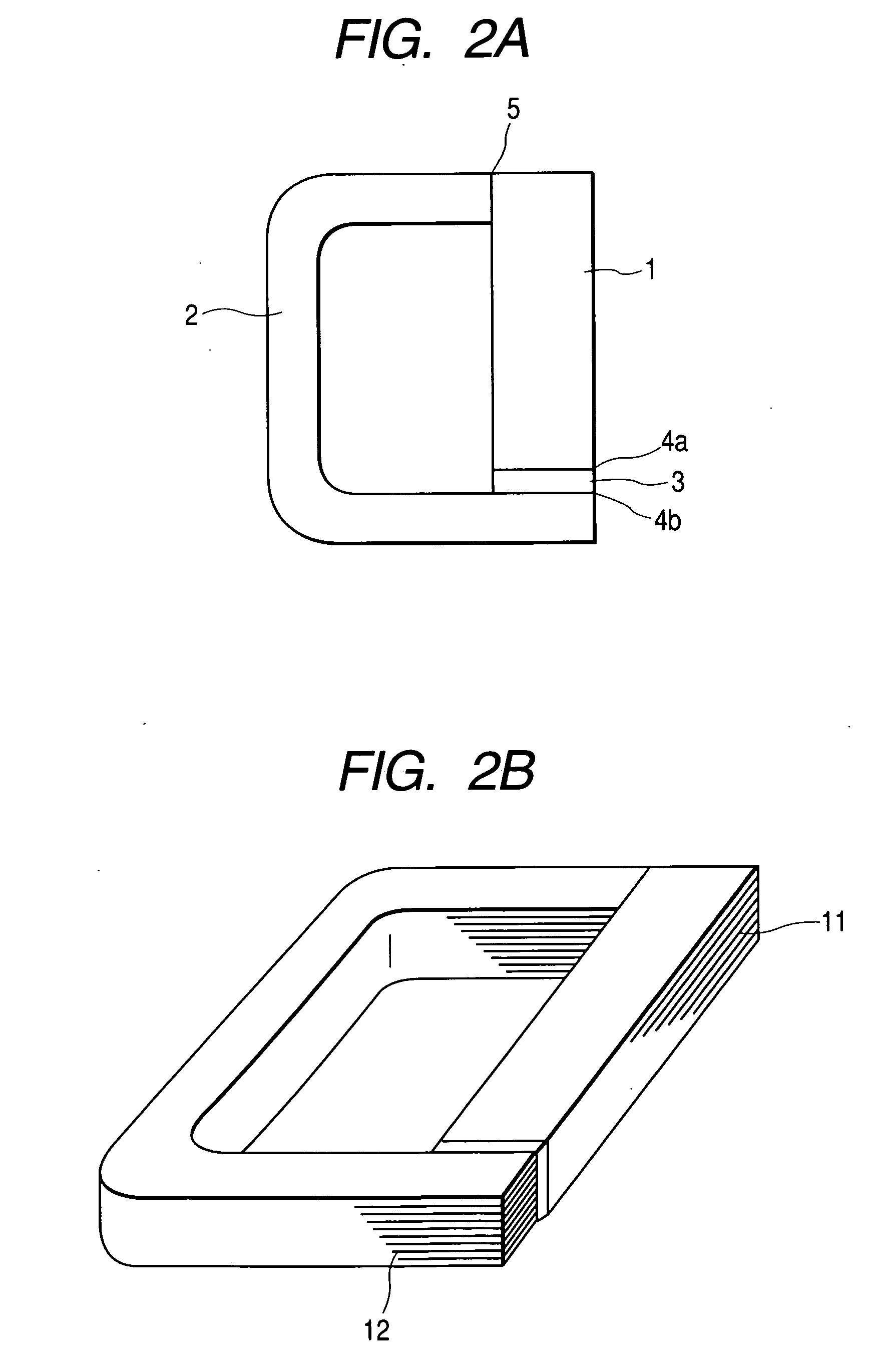Ignition coil
a technology of ignition coil and coil body, which is applied in the direction of transformer/inductance details, inductance, induction energy storage installation, etc., can solve the problems of poor magnetic flux density, inability to position permanent magnets, and inability to achieve magnetic efficiency enhancement, and achieve low cost
- Summary
- Abstract
- Description
- Claims
- Application Information
AI Technical Summary
Benefits of technology
Problems solved by technology
Method used
Image
Examples
embodiment 1
[0018] Referring to the drawings, Embodiment 1 of the ignition coil to which this invention is applied will be described. FIG. 1 is a sectional view showing an entire structure of the ignition coil. In FIG. 1, denoted by numeral 1 is an exciting core in a substantially I-shape which is provided, on its outer periphery, with a primary coil 6 wound around a first bobbin 7, and on its still outer periphery, with a secondary coil 8 wound around a second bobbin 9. A closed magnetic path forming core 2 has a substantially C-shape, and is so designed as to enclose therein the aforesaid primary and secondary coils 6, 8 and the exiting core 1. Numeral 3 represents a permanent magnet arranged in a first gap. Numeral 10 represents a connector component including a so-called igniter device 10a for switching on and off the electric current passed through the primary coil 6. A part of the first bobbin 7 is protruded so as to be adjacent to the igniter device 10a for enabling signals of the connec...
embodiment 2
[0023] Now, Embodiment 2 will be described referring to FIG. 4. An exciting core 21, a closed magnetic path forming core 22, and a permanent magnet 23 are arranged as shown in FIG. 4. One face in a longitudinal direction of the exciting core 21 is faced with one end face of the closed magnetic path forming core 22, and the permanent magnet 23 is arranged between them. In addition, the other end of the exciting core 21 which is remote from the face adjacent to the permanent magnet 23 is brought into contact with the other face of the closed magnetic path forming core 22 which is remote from the face adjacent to the permanent magnet 23. Even in such positional relation, it is possible to take such a structure such that the gaps may not be affected by variations of the components, by controlling only the flatness of the faces of the two iron cores which are adapted to come into contact.
embodiment 3
[0024] Then, Embodiment 3 will be described referring to FIG. 5. Usually, there is only a small difference in sectional area between the exciting core and the closed magnetic path forming core for the purpose of securing an area for the magnetic path. Accordingly, the sectional areas of the exciting core 11 and the closed magnetic path forming core 112 are close to each other as shown in FIG. 2B. However, provided that the closed magnetic path forming core 12 can obtain same magnetic density as that of the exciting core 11, the cores need not have the same sectional shape. Therefore, in case where a predetermined area is secured as the sectional area of the gaps, the sectional shapes of the iron cores can be optionally changed. In FIG. 5, as compared with the exciting core 31, the closed magnetic path forming cores (32, 36, 37) have an elongated shape. As the results, the faces to be contacted will be limited, and it would be necessary to control the flatness of only the faces to be...
PUM
 Login to View More
Login to View More Abstract
Description
Claims
Application Information
 Login to View More
Login to View More - Generate Ideas
- Intellectual Property
- Life Sciences
- Materials
- Tech Scout
- Unparalleled Data Quality
- Higher Quality Content
- 60% Fewer Hallucinations
Browse by: Latest US Patents, China's latest patents, Technical Efficacy Thesaurus, Application Domain, Technology Topic, Popular Technical Reports.
© 2025 PatSnap. All rights reserved.Legal|Privacy policy|Modern Slavery Act Transparency Statement|Sitemap|About US| Contact US: help@patsnap.com



